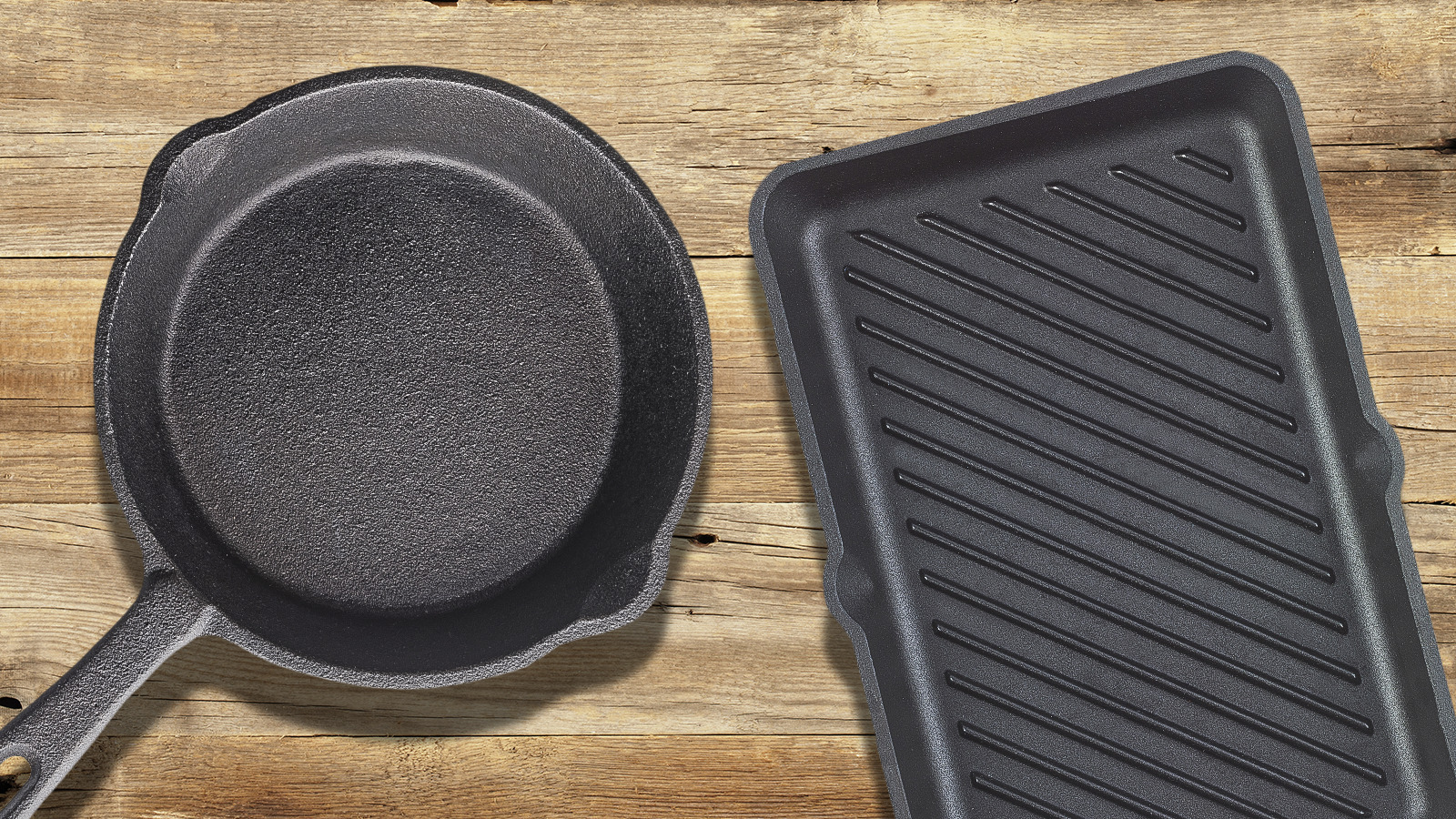The more you learn about cookware, the more you realize how much you don’t know. What is a ramekin, anyway? How is a wok different from a frying pan? And what’s the difference between a braiser and a Dutch oven?
Things can get extra complicated when two types of cookware have similar purposes or are made from similar materials. Take skillets and griddles. They’re both often — but not always — made of cast iron. They’re both used for frying, searing, and sauteing.
But skillets and griddles do serve different purposes, and visually, it’s pretty hard to mistake the two. Griddles are large, flat, and often handleless. While some are meant for stovetop use, many are gas or electric. Skillets are shallow pans with sloping slides and long handles that make them easy to maneuver. While most people will find skillets to be the more versatile instrument, griddles have their place too. Whether you’re trying to decide which to buy, confused about when to use what, or merely curious, it’s always a good idea to take the time to learn more.
What is a skillet?
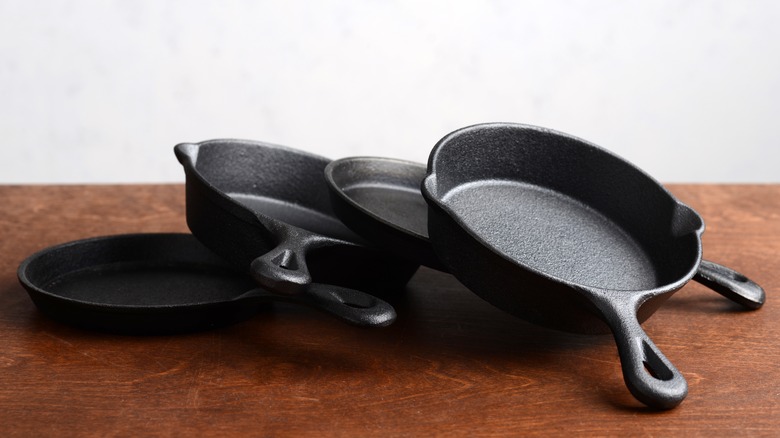
A skillet is a large, shallow pan with a flat bottom, sloping sides, and a long handle. They’re one of the most versatile pieces of cookware, perfect for searing meats and sauteing vegetables. Need to sear a steak? Bust out your skillet. Need to bake cornbread? Your skillet can probably handle that, too.
But wait! Isn’t that just a frying pan?
Not exactly. But don’t get too lost in the semantics: Skillets and frying pans have a lot of similarities. While skillets are deeper and sturdier, they are generally interchangeable with frying pans. There’s not as much difference between a skillet and a frying pan as between a skillet and a saute pan or a skillet and a griddle.
While skillets are often associated with cast iron, they can be made from any number of materials. Stainless steel, ceramic, and copper skillets are common; some come in enamel or nonstick varieties. Each material has different properties and uses, so do a little research to decide what you want if you’re in the market for a new one. You can’t go wrong with cast iron, though
Despite their versatility, skillets don’t serve every purpose. No cooking tool is one-size-fits-all, and some dishes will be better suited for preparation with a griddle.
What is a griddle?
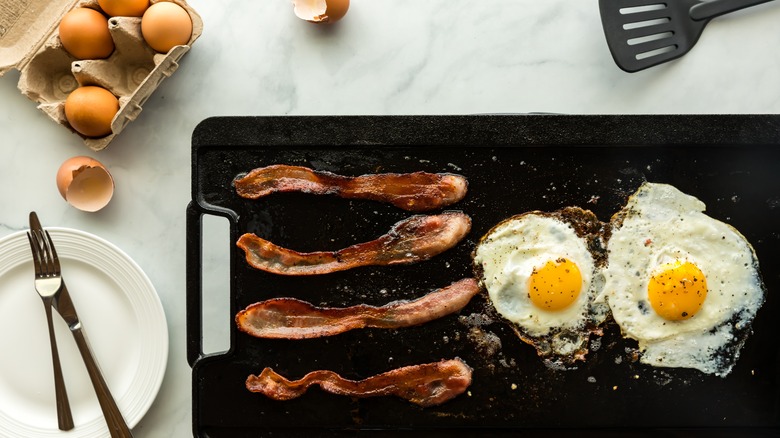
Griddles come in many different sizes and shapes, with a long history across many cultures. There are square griddles, round griddles, and rectangular griddles. You’ll find that some stovetop griddles are no larger than a skillet, while some rest over several burners. Some work perfectly over a campfire, while others are gas or electric. The biggest are found in restaurants and cafeterias, where cooks can use them to make large quantities of food at once.
While large griddles — especially the commercial ones found in restaurant kitchens — can look a bit like flat-top stoves, they’re actually pretty different. Flat-top stoves only have heating elements under burners, while griddles have heating elements throughout. And, while stoves are meant for cookware, you shouldn’t place a pot or pan on top of a griddle.
Like skillets, griddles are made from a variety of materials: Ceramic, steel, copper, and aluminum. Cast iron is particularly popular due to its durability and ability to retain heat. Consider opting for cast iron over nonstick; nonstick griddles aren’t as sturdy and can’t handle high temperatures.
Some griddles moonlight as grills. Also called “grill pans,” these griddles have raised ridges to imitate the grates of a grill to achieve a grilled texture on the stove. The ridged surface of a grill pan isn’t as versatile as the flat plate of a regular griddle, though, so some griddles are reversible or come with interchangeable plates.
Griddles are often gas or electric
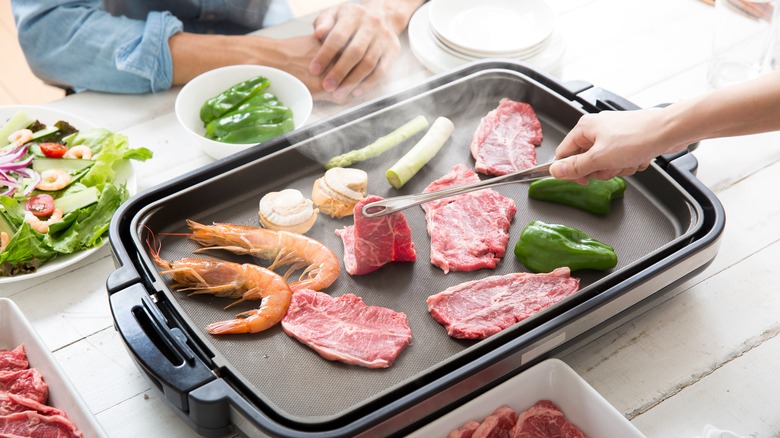
While skillets are typically meant for stovetop use, griddles are often gas or electric. Some skillets are electric — and electric skillets have plenty of uses. But they’re nowhere near as prevalent as electric and gas griddles. These often come with additional features, like temperature controls. Some come with warming trays that fit underneath the cooking surface, others fold in two to double as panini presses.
Electric griddles tend to have more even heat distribution, too. Stovetop versions tend to have cool spots that the burner doesn’t reach, but electric griddles have heating elements spaced throughout, ensuring even heat distribution. While the even, well-regulated cooking surface of a gas or electric griddle is usually an advantage, the uneven heat distribution created by a stovetop griddle can be an advantage in its own right. Since stovetop griddles sit over multiple burners, you can create separate cooking zones by adjusting the burners independently. Some electric griddles — especially models meant for restaurant use — have remedied this by having separate temperature controls for different areas.
Griddles tend to be larger

Roman023/Getty Images
One of the main benefits of griddles is that they’re typically much, much larger than skillets. While a large skillet could maybe accommodate two or three small pancakes, your standard griddle can handle twice as many and still have room for eggs and bacon. They’re also handy for cooking cuts of meat that wouldn’t normally fit in a skillet, like skirt steak or a large fish. The best part? You can toss vegetables on to serve as a side, and everything will be ready together.
Of course, while large griddles are ideal for feeding a crowd or searing extra-large steaks, they have downsides. Like any large appliance, they can be cumbersome and difficult to store. If you’re only cooking for one or two people — or live in a small home — you may want to opt for a skillet. You can also choose a smaller griddle as some stovetop griddles only cover one burner.
What are skillets best for?
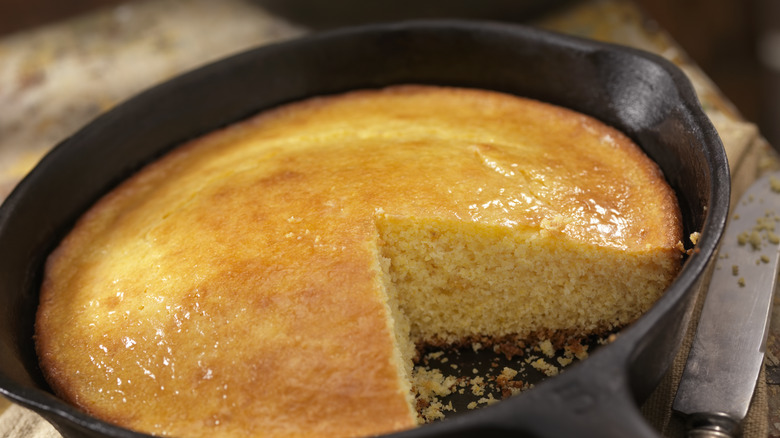
Skillets are extremely versatile in their own right and have a few advantages over griddles, too. One of the biggest advantages is their depth. While even a small amount of liquid can slosh over the side of a griddle, skillets are deep enough to contain sauces and even some stews. They’re also useful for techniques that require a moderate amount of liquid. A skillet can be a good choice if you’re braising, a technique that involves browning meat before cooking it in liquid, and they’re great for deep frying’s less-intense cousin, shallow frying.
Another advantage: Most skillets work well in the oven. Traditionally, cooks used cast iron skillets for cornbread. But don’t let that limit you. Use your skillet to bake giant cookies, roast vegetables, or cook quiches. Craving a deep-dish pizza? Grab a skillet, those sturdy sides are perfect for cooking a crispy crust. Just confirm your pan is oven-safe first; while most cast iron can go in the oven, skillets with plastic components or nonstick coatings are a no-go.
What are griddles best for?
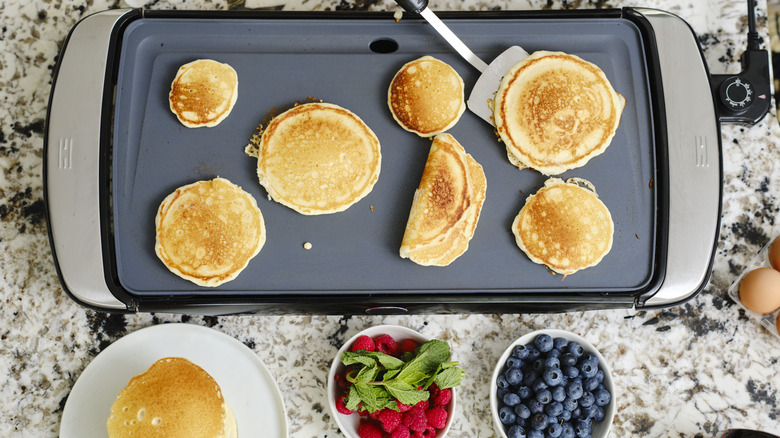
There’s a reason griddles are a mainstay in diners: They’re perfect for classic American breakfast foods. A griddle is one of the best ways to cook sausage patties, eggs, bacon, and pancakes, especially in large quantities.
Despite their flat bottoms, skillets aren’t always ideal for frying flapjacks or turning delicate foods like fish or crepes. Even well-seasoned cast iron can have trouble releasing food, and the (relatively) high walls of a skillet can make it difficult to maneuver a spatula. Griddles provide a nice, flat surface that makes it easy to slide a spatula under what you’re cooking.
The large, flat surface of a griddle can come in handy if you’re cooking fatty foods, too. As tasty as bacon drippings are, you don’t necessarily want your food swimming in fat. While fat will pool in the bottom of a skillet, the large surface of a griddle gives it room to spread out. Some griddles even have drains to collect excess fat.
Once you’ve gotten used to cooking on a griddle, you’ll appreciate its versatility and see great ways to use your griddle everywhere.



